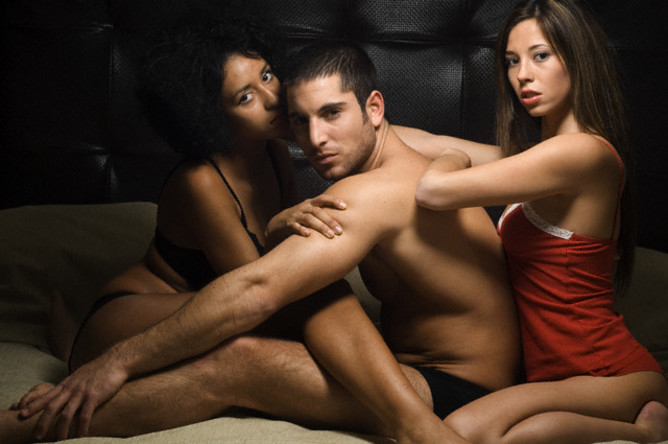
Who volunteers to have sex in a laboratory?
I was struck by this question when reading about an experimental study of ideal sexual positions for men with back pain.
For the purpose of the research, couples were filmed using motion capture and infra-red technology while they had sex.
The researchers were in a separate booth where they could hear, but not see, the participants. Electrodes were used to record muscle activity in certain parts of the body, to get an idea of force.
Other sex studies are more invasive. Penile plethysmographs measure penis circumference in response to sexual images; measuring how hard a man gets in response to porn. Women’s sexual arousal is measured by a vaginal plethysmograph; a sensor within a small cylinder inserted into the vagina like a tampon, which measures sexual arousal. Not a particularly sexy experience, one would imagine.
Perhaps some people are turned on knowing their sexual activities are being monitored by experts. If this is the case, can we generalize from the findings of laboratory-based sex studies?
Pioneering Masters
William H. Masters and Virginia E. Johnson were the first researchers to observe sex in the laboratory, in 1950s United States. They studied prostitutes in their early experiments, due to concerns that nobody else would volunteer to take part.
In total, 145 women wore electrocardiographs to ascertain their heart rate and electroencephalographs to monitor their brain activity, so the experimenters could measure their responses to pornography, masturbation, or vibrators.
Masters and Johnson’s later research involved volunteers from the general community. They observed over 300 couples, who had been randomly assigned into pairs, having sex. They also studied their own sexual response – having sex with each other for science, while wired up in the laboratory.
Their “human sexual response cycle” theory resulted from this work. This cycle of arousal, orgasm and resolution during sexual intercourse was seen to underpin normal sex and sexual “dysfunction”. It had enormous influence on how sex was conceptualized in medicine and society at large.
Questionable methods
Early sex researchers were determined to be “scientific” to avoid criticism about having nefarious motives. This meant experimental methods were adopted without question; it was all hard science (no pun intended).
But the applicability of such methods to the complex phenomenon that is sexual desire and response has been questioned by many contemporary sex researchers and social scientists.

Male students who volunteer for sexual experiments have been found to have engaged in more diverse sexual behaviours. kedai lelaki, CC BY
Measuring bodily response is not the only way to understand sex. Some would say that sex is all in the mind, with beliefs and feelings more important than bodily functioning. Women’s sexual desire is often associated with being desired, for instance, rather than with a physiological response.
Women and men can also desire and enjoy sex when their bodies are “dysfunctional”; that is, when they can’t perform sexual intercourse, as that’s not the only way to have sex.
Questionable subjects
Questions have also been raised about the representative nature of those who take part in sex research. Male students who volunteer for sexual experiments have been found to be less sexually fearful and guilty than those who refuse. They’ve usually had more sexual partners than non-volunteers and have engaged in more diverse sexual behaviors.
Women volunteers have been found to have had more sexual trauma, to masturbate more frequently and to have had greater exposure to pornography at an early age, as well as having less sexual fear.
Today, researchers who use experimental methods to study sex are in the minority. Ethical considerations, difficulties in recruitment, difficulties in getting funding, and awareness that sex is more than the body, are some of the reasons for this.
Contemporary sex researchers mainly use questionnaires or interviews, asking people about their sexual experiences and desires.
But participant bias is also a problem in self-reporting sex research. Sex survey and interview volunteers have been found to more sexually experienced, higher in sensation seeking, more “erotophilic” – having more masturbation and sexual fantasies – and lower in social conformity. They also have higher self-esteem and are more generally self-disclosing.
Unquestionable importance
All this doesn’t mean all volunteers for sex research are exhibitionist non-conformists – or that there’s anything wrong with it, even if they are.
Many people who volunteer to take part in sex research have concerns or difficulties, and want to help others in the same situation. Others are simply relaxed about their bodies and sexuality – and happy to further scientific understanding of sexual behavior.
Deciding which method is best for studying sex depends on the research question. Those interested in the functioning of the body measure sexual response in the laboratory. Emotions, feelings and cultural constructions of sex require an interview or survey. Put these methods together, and you have a more complete picture of the complexity of sexual desire and behavior.
Oh, and the answer to the question of the best sexual positions for back pain? For men, doggy style. But not if your partner has back pain as well, as bending is the worst position of all for him or her.![]()
By Jane Ussher, Professor of Women's Health Psychology, Centre for Health Research at University of Western Sydney. This article was originally published on The Conversation. Read the original article.




Comments